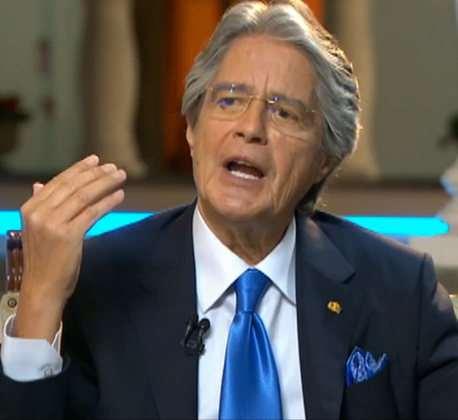Suddenly, the strike heads toward resolution; How did Lasso gain the upper hand from Conaie?

Protesters face off against police Saturday in Quito.
The momentum shift was dramatic. Within the span of 24 hours President Guillermo Lasso went from being a man on the ropes, battered and facing near-certain defeat, to being the man calling the shots.
On Friday morning, his government was reeling as indigenous strikers held Quito in their grip, marching at will through the city center. As late as noon, the Correistas pushing for Lasso’s impeachment in the National Assembly believed they could cobble together the votes to evict him from Carondelet Palace.
grip, marching at will through the city center. As late as noon, the Correistas pushing for Lasso’s impeachment in the National Assembly believed they could cobble together the votes to evict him from Carondelet Palace.
Strike leader Leonidas Iva appeared at the top of his game, dismissing the need for talks until all indigenous demands were met, even suggesting that new ultimatums were forthcoming. Around the country, he commanded legions of campesino roadblockers, effectively cutting off food and fuel supplies to millions of Ecuadorians. He could boldly claim that those who committed violent acts were not part of his movement while, at the same time, taking full advantage of the fear, anger and disruption they created.
Things took a sudden turn Saturday. First there was Lasso’s seemingly incomprehensible announcement that the state of emergency in six provinces was suspended. Then came the news that Iza and Lasso’s assigns had met in a Quito church to establish guidelines for talks. It became clear that rescinding the emergency declaration wasn’t so incomprehesible afterall, that it was simply a prelude to the meeting.
So what happened?

President Guillermo Lasso
First, in what appeared an act of desperation, Lasso announced Friday afternoon that police and the army would apply “graduated” force against violent protesters. The army would move in, he suggested, and rubber bullets as well as tear gas would fly. In his televised statement, Lasso also called Iza a “coup leader”, a man uninterested in peaceful resolutions. Within hours, government forces descended on the strike’s staging grounds at the Casa del Cultura and El Arbolito Park. As tear gas filled the air, thousands of strike supporters vacated the area. Many, apparently, decided it was time to go home.
It was obvious Saturday that Lasso’s “no more mister nice guy” act was not desperation but part of a calculated strategy.
Earlier, at the National Assembly, the Social Christians and Democratic Left parties, sometime-allies of the the Corresta Union of Hope (UNES), announced they would not support Lasso’s impeachment. Several members said their decision did not indicate support for Lasso, simply that the country didn’t need another distraction in a time of crisis. Privately, several admitted they didn’t want to grant more power to Rafael Correa and his acolytes.

Leonidas Iza
Then, behind the scenes, within the ranks of the indigenous strikers, anger was brewing at Iza’s alliance with the Correistas. Although Iza considered it a strictly strategic move to oust Lasso, many of his followers had a visceral reaction to joining ranks with an old enemy. Wasn’t it Correa, afterall, who used extreme force to put down their protests in 2015 and 2016? Wasn’t it Correa, they asked, who called them “indios estúpidos” when he was president and talked about “busting campesino heads” at roadblocks?
When it was announced to the crowd of strikers at Casa del Cultura Thursday that Correista National Assembly members had arrived to talk about the new friendship between the indigenous movement and UNES, the crowd erupted in chants of “Fuera Correa.”
Iza, a dyed-in-the-wool ideologue and political powerbroker, had made a critical miscalculation. He had forgotten that in indigenous traditions, matters of the heart and gut usually trump those of the head. His two-pronged plan for victory — in the streets and through a partnership with the Correistas in the Assembly — was falling apart.
It will take days, maybe weeks, for a deal to be reached. The roadblocks will not come down tomorrow — or the day after or even the day after that. The supply shortages will continue. There will be more heated rhetoric and the insults will continue to fly. There will be claims that there can be no deal. But soon, however, one will be announced.
In the National Assembly, the talk of impeachment will continue although it is now a lost cause. “The strategy is to force the members to reveal who stands with Lasso and who stands with the people,” said one UNES Assemblywoman Friday night.
Iza will remain in charge of the strike to the end — and of Conaie. Lasso, even though he holds the upper hand in this case, will remain an ineffectual president protecting the status quo in a divided country. He will make no serious effort to fix the government’s structural deformities of an inadequate tax base and informal employment.
“The encomienda wins again,” said a commenter Saturday afternoon on an indigenous Facebook page, referring to the Spanish colonial system that exploited South America’s indigenous population. “We are betrayed by our own people as often as we are by our oppressors.”





















